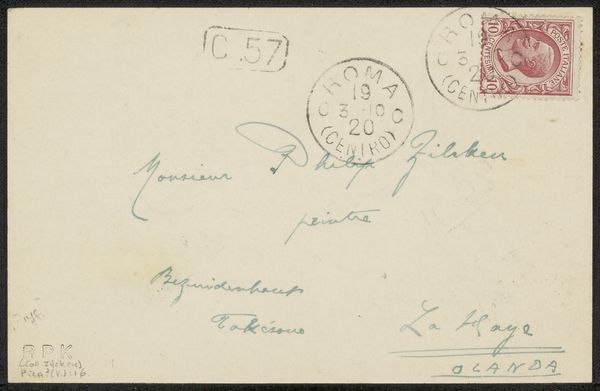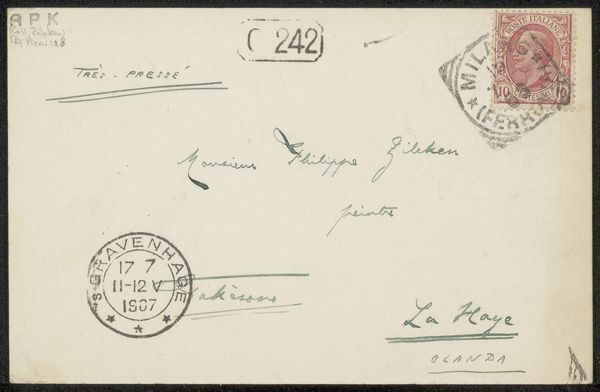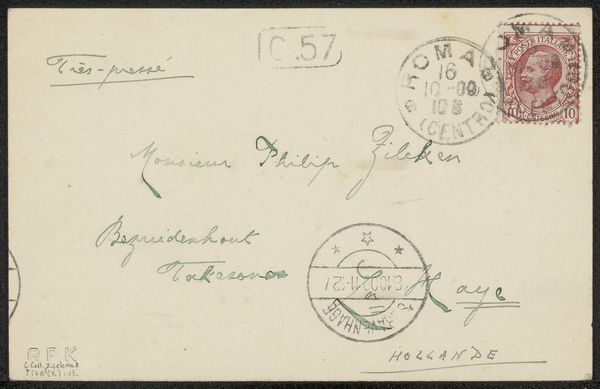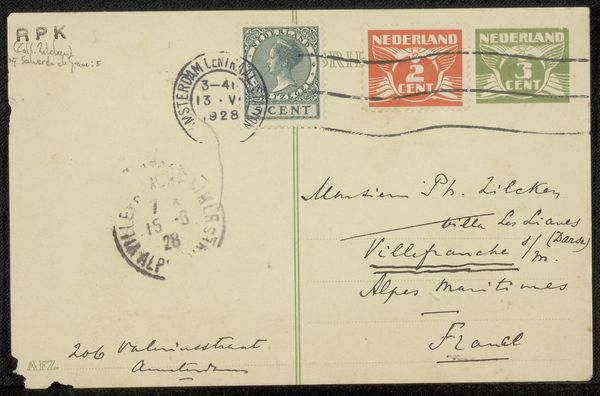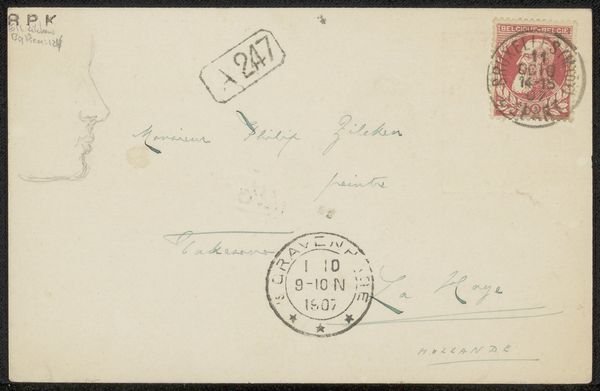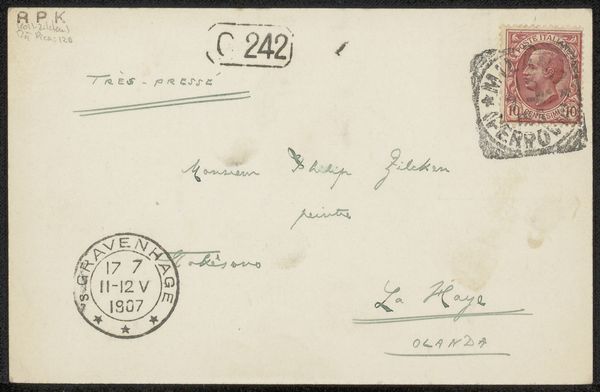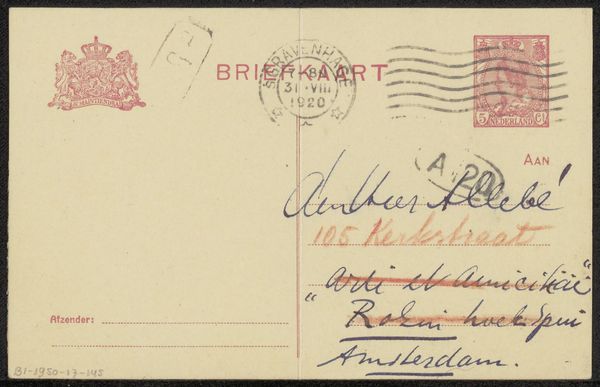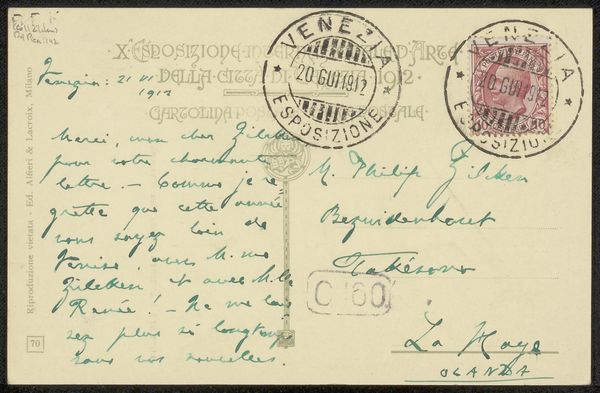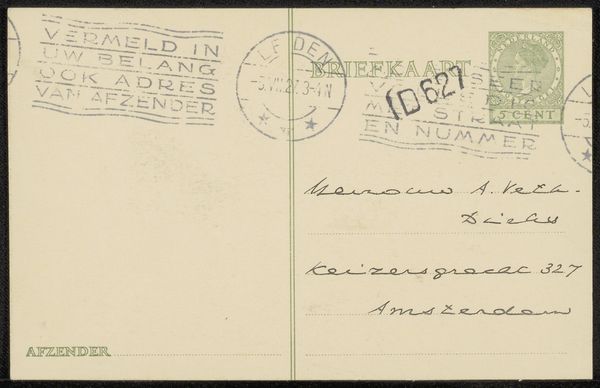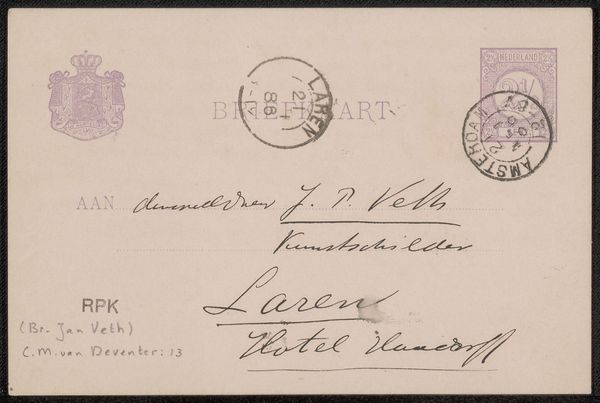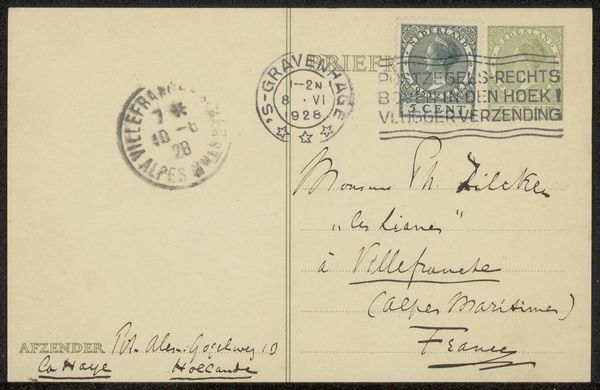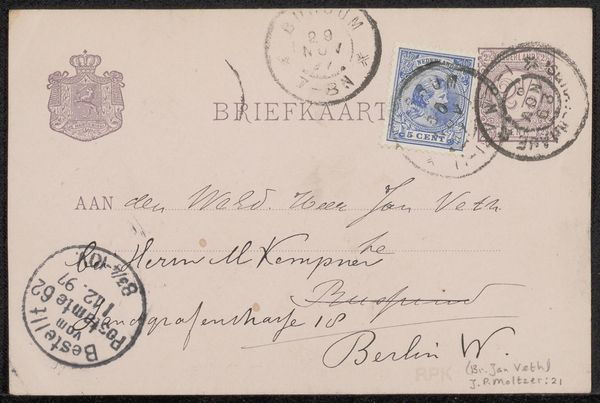
Prentbriefkaarten aan Henriette Wilhelmina van Baak en Renée Hélène Laure Zilcken before 1908
0:00
0:00
drawing, paper, photography, ink
#
drawing
#
paper
#
photography
#
ink
#
calligraphy
Copyright: Rijks Museum: Open Domain
Curator: Here we have several postcards addressed to Henriette Wilhelmina van Baak and Renée Hélène Laure Zilcken, likely dating from before 1908. The postcards combine drawing, ink, and photography on paper and exemplify the communication methods used at the time. They each showcase an elegant calligraphy style, almost like miniature works of art. What are your immediate thoughts? Editor: There's a certain romance to these handwritten missives, a fragility that's both appealing and melancholy. Each stamp and inscription seems to whisper secrets of a time before instant digital communication. The dates imply the postcards might even originate from the Victorian era. I wonder who these women were and the nature of their correspondence. Curator: It is interesting to analyze the context of postcard usage around the turn of the century. Postcards offered a faster, cheaper means to stay connected, democratizing communication for middle-class citizens who otherwise wouldn’t travel as easily as the elite or have frequent postal contact. The artistic aspect also elevated the act of correspondence. Editor: Absolutely. Postcards like these functioned not just as functional messages but as a tangible expression of connection. The messages inscribed carry coded sentiments and unspoken intimacy between individuals that a contemporary medium perhaps could never duplicate. Curator: And, consider that the postcards become primary documents within our historical narrative, tracing migratory movements, postal service evolutions, and potentially shifting familial or even political landscapes of the time. These are fragments which hold significant historical information. Editor: Indeed, a postcard today has lost much of its original meaning as it once embodied a more considered relationship. So now as we observe and archive them in cultural spaces, we must recognize them in their context: as time capsules linking the lives and emotions of everyday folks from a distant age, delivered with a sense of purpose and affection. Curator: Ultimately, this examination underscores the value of material culture, offering nuanced interpretations and fresh perspectives to enrich our dialogue with history and foster an expanded appreciation of human expression. Editor: A thoughtful way of understanding our place within history!
Comments
No comments
Be the first to comment and join the conversation on the ultimate creative platform.
